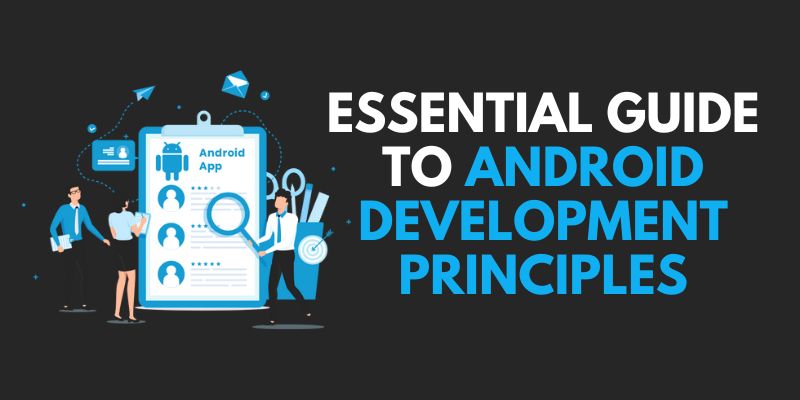Essential Guide to Android Development Principles
Getting started with Android development appears to be a difficult task. You must have a thorough understanding of Android programming principles and fundamental rules. Unfortunately, most developers do not get the opportunity to master the fundamentals until it is too late. There are a few guidelines and rules that you must follow. To know more about the principle of Android, join FITA Academy‘s Android Training in Chennai, which will provide you with a diverse several sets of skills and the best Placement Training. This blog will explain to you, Essential Guide to Android Development Principles.
Android Development Principles
Android development principles can be best explained by the SOLID acronym, as devised by Robert Martin. It refers to:
Single Responsibility
Open-Closed Principle
Liskov Substitution
Interface Segregation
Dependency Inversion
Robert Martin created these five object-oriented design principles to assist developers in creating manageable and extensible systems. These principles not only help in the creation of well-structured code, but they also ensure that the code may be easily extended in the future.
So, let’s take a closer look at each of these ideas.
Single Responsibility
As the name implies, single responsibility means that each of your classes should have only one responsibility. For example, if you must conduct computations, mapping, and formatting, create three different classes to handle each duty rather than one class to manage all three.
But, exactly, what do we mean by responsibility? A “reason to change” might be viewed as a responsibility. If you can think of more than one reason to switch classes, you are most likely violating the Single Responsibility rule.
The rationale for Single Responsibility is that it complicates your class and leads to code duplication concerns, which nearly always results in non-updated code.
Enroll in the Android Online Training, Which will provide you with more Concepts about Advantages of Android.
Open-Closed Principle
This means that your software entities like classes, functions, modules etc. should be open to extension but not modification.
This is a very basic principle that should be followed no matter what platform you are coding for. This principle requires you to write a class or function or module in a way that it does need to be changed whenever your requirements change.
Liskov Substitution Principle
This is the type of idea that is difficult to explain, despite the fact that almost all of us accidentally follow it.
According to the Liskov Substitution Principle, “objects should be replaceable with their subtype instances without the need to change the program.”
This may be confusing, but let me explain with an example.
Assume you created a class that requires a List Object to execute a specific task. What if we submit an ArrayList Object instead of a List Object to this class? The class shouldn’t work right?
No, the program will function normally. The Liskov Substitution Principle is at fault.
The ArrayList Object is a subclass of the List class, and because the List class is an abstraction, the ArrayList Object will function normally.
In short, you can substitute List objects with any of its subtypes without breaking the program. So, if T and S are required in a subtype of T, then objects of T should be substituted with objects of S without affecting the program’s features, particularly the correctness property.
Interface Segregation Principle
This is a relatively simple principle. According to the Interface Segregation Principle, there should be many Client-specific User Interfaces rather than a general purpose User Interface.
Assume a user is required to provide his email address, complete a survey, and select his favorite dish. In this scenario, three separate User Interface pages would be preferable to a single general purpose page that asks all of these questions.
Because of the various callbacks, a general purpose User Interface will complicate your code and confuse the user. Always give users tiny, attainable goals rather than a large, time-consuming activity.
Dependency Inversion Principle
The Dependency Inversion Principle covers two things:
- High-level modules should be autonomous of low-level modules. Both should be predicated on abstractions.
- Abstractions should depend on Details rather than Details on Abstractions.
Finally, you enjoyed this blog and now understand everything about the principle of android, including Essential Guide to Android Development Principles.
If you are interested in beginning your career as an Android Developer, Training Institute in Chennai provides various Application Development strategy-based training which will help step your career to the next level.

